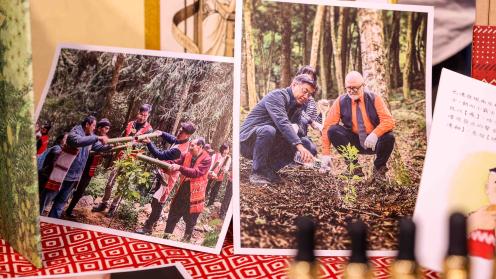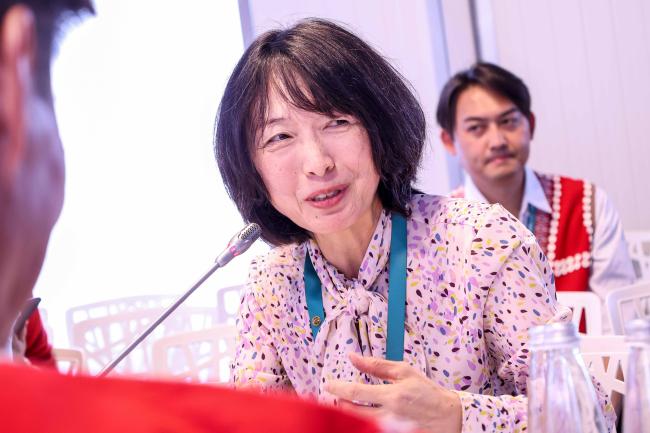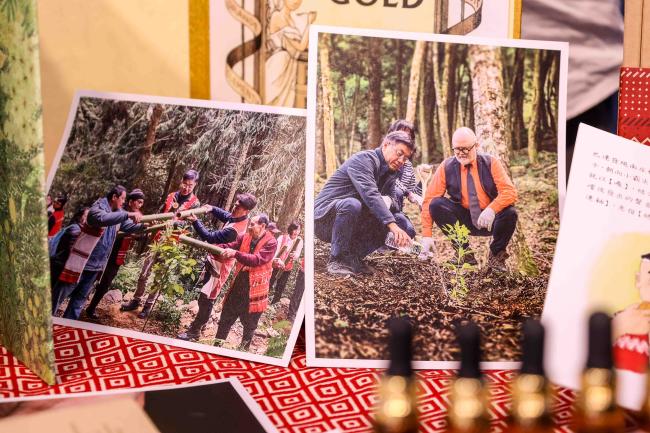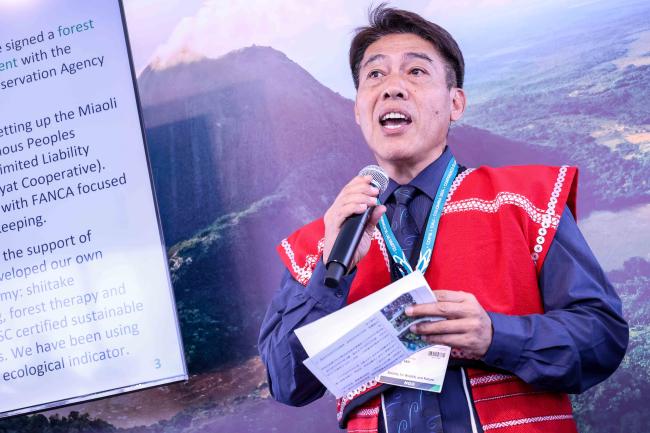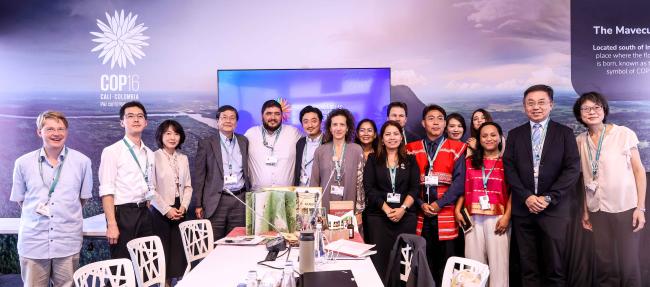About
Biodiversity conservation and sustainable use in landscapes and seascapes are central to achieving the broad goals of the 2050 Vision for Biodiversity. The International Partnership for the Satoyama Initiative (IPSI) fosters collaboration among governments, Indigenous communities, businesses, and other stakeholders. This event showcased examples of on-the-ground multi-stakeholder collaboration to help realize the vision of living in harmony with nature.
Maiko Nishi, Research Fellow, IPSI Secretariat, United Nations University Institute for the Advanced Study of Sustainability (UNU-IAS), moderated the event.
Tsunao Watanabe, IPSI, UNU-IAS, said IPSI was launched at COP 10 to realize living in harmony with nature by promoting local knowledge. He highlighted IPSI’s production of case studies on socio-ecological production landscapes and seascape (SEPLS) for providing valuable insights into sustainability activities and supporting action under the Kunming-Montreal Global Biodiversity Framework (GBF).
Fumiko Nakao, Principal Coordination Officer, CBD Secretariat, highlighted on-the-ground activities and the collaborative relationship between the CBD and IPSI.
Yutaka Matsuzawa, Vice-Minister for Global Environmental Affairs, Ministry of the Environment, Japan (MoEJ), emphasized the limited amount of time until 2030 and IPSI’s actions under the GBF, including through other effective area-based conservation measures (OECMs), and its whole-of-government, whole-of-society approach.
Maiko Nishi spoke about IPSI’s landscape approach and peer learning process, highlighting spatially-based strategies and an iterative learning process. She noted IPSI has supported 68 projects since 2013, conducted thematic reviews of 83 case studies from different regions, and developed the Toolkit for the Indicators of Resilience in SEPLS.
Koji Miwa, Biodiversity and Forest Area, Institute for Global Environmental Strategies (IGES), presented on the Satoyama Development Mechanism, explaining that it provides up to USD 20,000 for landscape or seascape restoration in collaboration with IPLCs. He said the funded projects have been in 26 countries, and gave examples of work in Panama, Argentina, and Mexico that supported sustainable food production.
Chih-You Ken ta:in a taboeh Sa:wan saS'amesm, Chair, Miaoli County Saisiyat Indigenous Peoples Forestry and Worker Limited Liability Cooperative, and Society for Wildlife and Nature International (SWAN), explained that the Saisiyat Tribe signed a co-management agreement with the Forestry and Nature Conservation Agency (FANCA) of Taiwan. Through this collaboration, his Tribe has developed projects on mushroom farming, forest therapy, ecotourism, sustainable logging, and beekeeping, and reintroduced the critically endangered native katayoe’ or Nanzhuang orange to their land. He outlined benefits from the partnership, including more stable jobs, inspiring young people to return to the Tribe, and a revitalization of their culture.
Li-Hsin Hsieh, FANCA and SWAN, noted Taiwan’s high population density and high biological and cultural diversity and described the Nanzhuang orange restoration project between the Saisiyat Tribe and FANCA. She noted its many uses, including for food, medicine, tools, wood, oils, and cultural activities. She highlighted the collaborative approach that wove together traditional ecological knowledge and Indigenous wisdom with modern science and market opportunities to create a strong foundation for long-term sustainability.
Paulina G. Karim, National Dong Hwa University and SWAN, noted that SEPLS contain much of Taiwan’s biodiversity but face many challenges. She said the Taiwan Ecological Network (TEN) uses an integrated strategy that includes spatial planning, cross-sectoral cooperation, and landscape approaches. She described the Taiwan Partnership for the Satoyama Initiative that brings together organizations working on landscape approaches four times a year for peer-to-peer learning and on-the-ground training. She said the lessons and stories underline the fact that it “takes a landscape approach to live in harmony with nature.”
Andrés Quintero Angel, CEO, Corporación Ambiental y Forestal del Pacífico (CORFOPAL), spoke about sustainable production and biodiversity conservation in Colombia. He focused on work in two different areas which are very dry and harbor high levels of endemism, and where most properties are also engaged in agriculture. He described a partnership that supported coffee production using the SEPLS approach, which has resulted in a decrease in loss of forest cover and increased numbers of native species present. He attributed the management of SEPLS and effective community-based governance to achieving a balance between human and environmental needs and fostering societies living in harmony with nature.
Nishi led a panel discussion focused on how to strengthen multi-stakeholder collaboration and support on-the-ground initiatives. Christian Schwarzer, Global Youth Biodiversity Network (GYBN), emphasized the whole-of-society approach and urged remembering why we want to create a world that lives in harmony with nature. Abigail Kitma, Tebtebba, highlighted the Philippines initiative to develop an Indigenous Peoples’ National Biodiversity Strategy and Action Plan.
Ana Beatriz Barona, Global Environment Facility (GEF) Small Grants Program, Colombia, emphasized stakeholder cooperation, including trusting that the community has the capacity to build their own proposals to enhance the opportunity for equal and effective participation.
Bopreang Ken, Ministry of Environment, Cambodia, described a project to promote green destinations by engaging the community to be the owner of ecotourism sites and provide services to the visitors. Ngin Navirak, GEF Small Grant Program, Cambodia, described capacity-building efforts including on proposal writing and efforts to make the grant process more accessible.
Hideki Kawai, Deputy Director of Biodiversity Strategy Office, Nature Conservation Bureau, MoEJ, emphasized using a landscape approach for forest management that incorporates the opinions of those whose livelihoods depend on it, and praised the meeting for bringing people together.
Organizers and Co-Hosts: UNU-IAS, IPSI, CBD Secretariat, MoEJ, IGES, Tebtebba, GYBN, MoEC, Women4Biodiversity
Contact: Maiko Nishi, IPSI nishi@unu.edu
For more information: https://www.cbd.int/side-events/6595
To receive free coverage of global environmental events delivered to your inbox, subscribe to the ENB Update newsletter.
All ENB photos are free to use with attribution. For the 2024 UN Biodiversity Conference, please use: Photo by IISD/ENB | Mika Schroder
